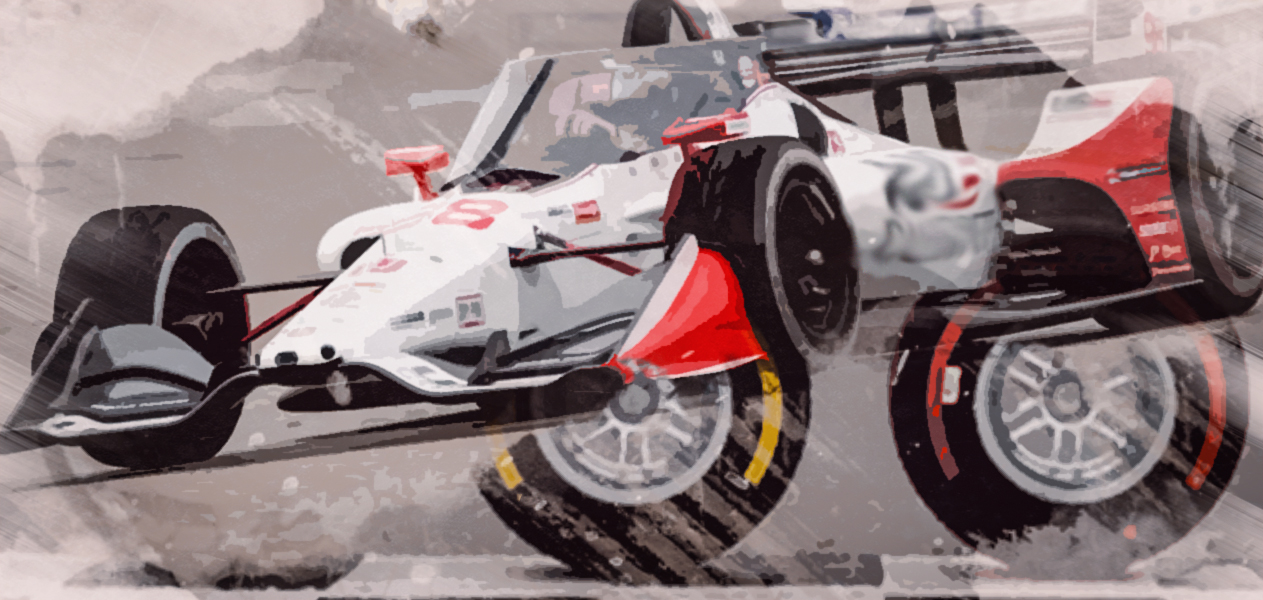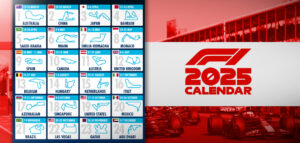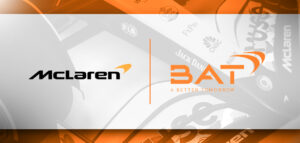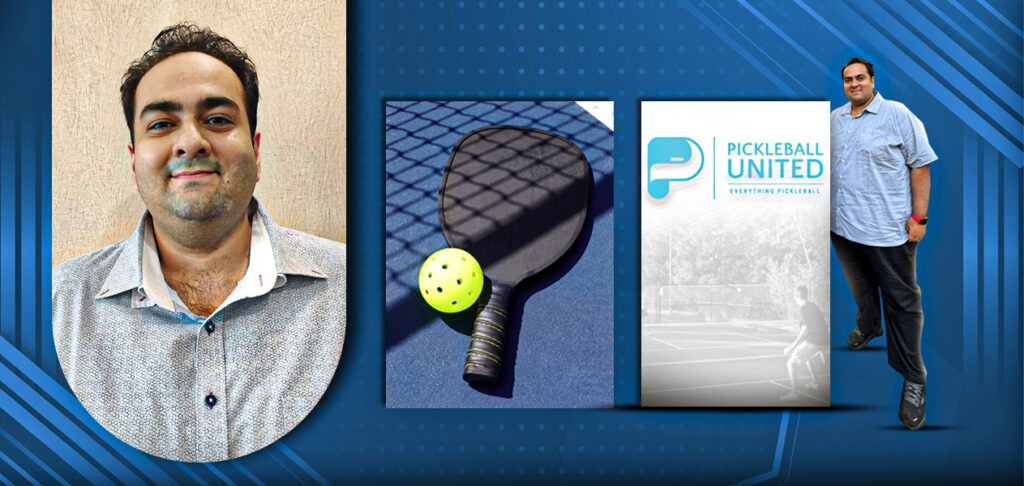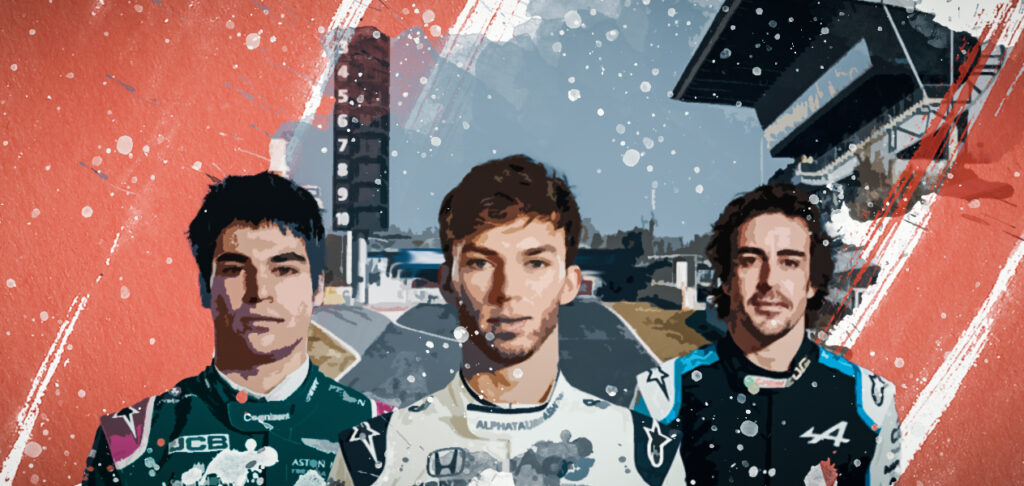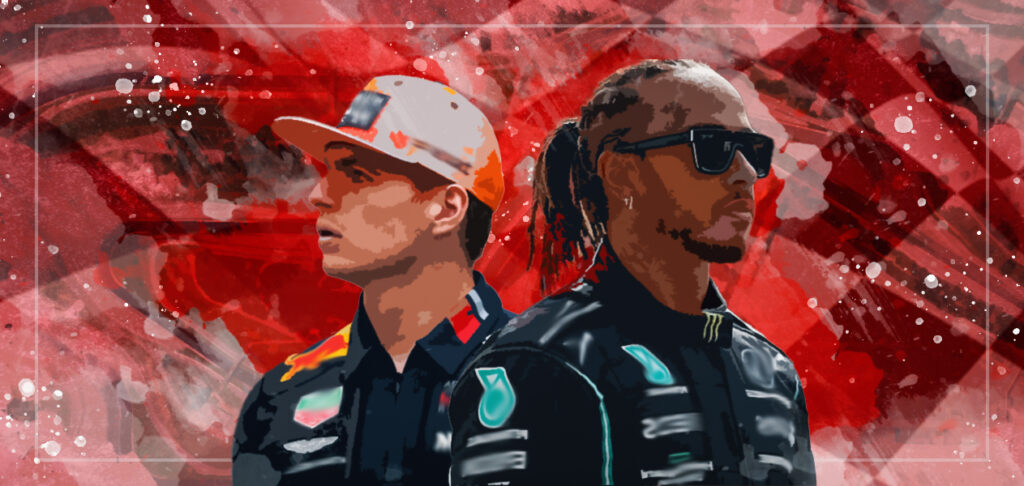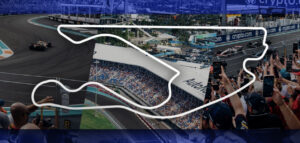As the cars got faster and faster, Pirelli struggled to keep up with their day-to-day advancement. The Milan-based company faced its biggest embarrassment in the 2020 British Grand Prix, where four drivers suffered from blown tyres in the closing stages of the race. This problem persisted throughout the season. Pirelli avoided any major tyre blowouts, but in most races the tyre performances dropped drastically during the closing stages.
The FIA announced new regulation changes for the 2021 season, which meant about a 10% reduction in downforce. With 10% less downforce, there would also be a shift in the balance of cars. For that, they used the 2020 Portuguese Grand Prix as a viable option to test out the prototypes for the 2021 season.
Pirelli believed that the Algarve International Circuit was the sort of track that resembled characteristics with most of the tracks in the 2021 Formula 1 calendar. It assigned each team with two programmes. In the first programme, one of the drivers would add a certain amount of fuel and do a single race run, while the second driver would have to do two short runs on those prescribed prototype tyres. Each team was given a different compound and different construction of tyres. Pirelli gathered all that data to prepare this year’s tyre compounds.
Also Read – F1 technology terms explained: flow-vis paint
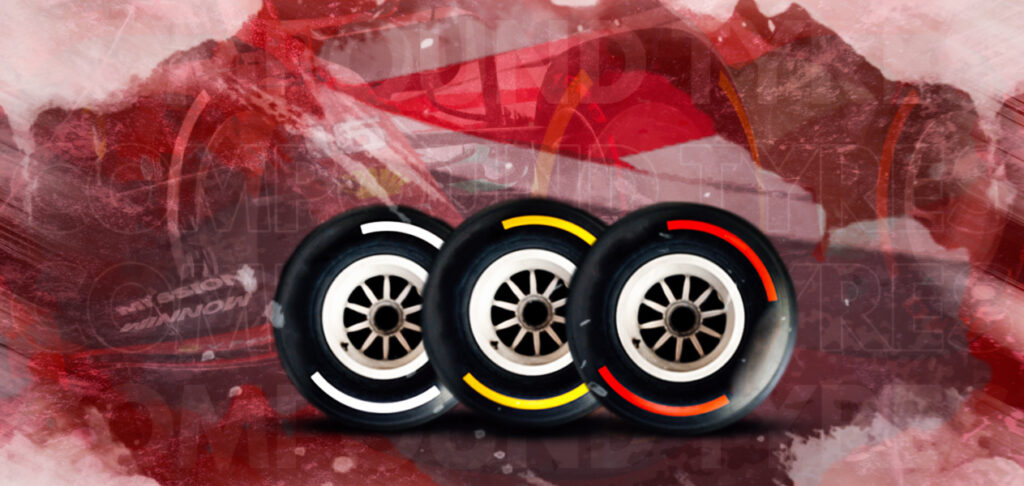
What are the tyre compounds for 2021?
In February, Pirelli’s head of F1, Mario Isola, said: “Announcing all the selections for the year right now will help the teams and the drivers with their planning, also allowing for maximum flexibility just in case the calendar has to change due to Covid-19 restrictions, as we saw last year.”
Isola continued: “The selections themselves are on the whole similar to last year, which means that teams should have plenty of data to fall back on – but we have two races where the nominations are softer.
“The first is Azerbaijan, where our C2 hard tyre wasn’t used last time, so we are now going with the softest selection of all: C3, C4 and C5.
“Then we have Brazil, where we will take the C2, C3 and C4 this year, as the C1 that was selected as the hardest choice last time didn’t show a particularly big advantage in terms of wear over the medium.
“In both cases, the softer nomination could lead to a greater variety of race strategies”.
Although Pirelli will be bringing the soft, medium, and hard tyre compounds to every race, the actual allocation of compounds varies from track to track.
Let’s take a look at all the tyre compounds Pirelli has allocated for the 2021 season.
C1 Compound:
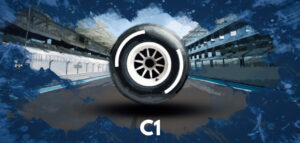 The C1 compound is the hardest tyre in the 2021 tyre range. This tyre is specifically designed for circuits that have fast corners. These tyres are for the tracks that put the highest loading through these tyres, typically abrasive surfaces with a high ambient temperature. Though these tyres take the longest to heat up, they are the most durable and have the lowest degradation of all tyres.
The C1 compound is the hardest tyre in the 2021 tyre range. This tyre is specifically designed for circuits that have fast corners. These tyres are for the tracks that put the highest loading through these tyres, typically abrasive surfaces with a high ambient temperature. Though these tyres take the longest to heat up, they are the most durable and have the lowest degradation of all tyres.
C2 Compound:
 The C2 compound, also known as Compound 2, is a versatile compound of tyre which is closer to the harder C1 compound than the C3 compound. Like the C1 compound, C2 is also more suited to high-speed corners, higher temperatures, and abrasive surfaces. Because of its softer nature compared to the C1 type, it is suitable for a wide variety of tracks on the 2021 calendar.
The C2 compound, also known as Compound 2, is a versatile compound of tyre which is closer to the harder C1 compound than the C3 compound. Like the C1 compound, C2 is also more suited to high-speed corners, higher temperatures, and abrasive surfaces. Because of its softer nature compared to the C1 type, it is suitable for a wide variety of tracks on the 2021 calendar.
Also Read – Most Affluent Formula 1 Drivers in History
C3 Compound:
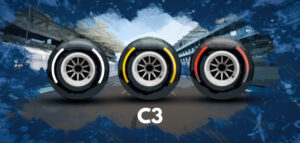 The C3 compound tyre is the most used tyre of all as it strikes a perfect balance between performance and durability. Most teams opt to use this compound for its performance superiority. This compound can be used as the softest tyre compound for high tyre degradation tracks, while it can be used as a hard tyre compound in low tyre degradation tracks.
The C3 compound tyre is the most used tyre of all as it strikes a perfect balance between performance and durability. Most teams opt to use this compound for its performance superiority. This compound can be used as the softest tyre compound for high tyre degradation tracks, while it can be used as a hard tyre compound in low tyre degradation tracks.
C4 Compound:
 The C4 compound tyres are suitable for tracks like Monaco and Singapore which are tight and twisty in nature. Although these tyres are easy to warm up and provide greater peak performance, one of their downsides is the limited life expectancy. If the improved consistency of the above three compounds is something to go by, then this year’s softer rubber compound should provide prolonged performance and be less susceptible to overheating.
The C4 compound tyres are suitable for tracks like Monaco and Singapore which are tight and twisty in nature. Although these tyres are easy to warm up and provide greater peak performance, one of their downsides is the limited life expectancy. If the improved consistency of the above three compounds is something to go by, then this year’s softer rubber compound should provide prolonged performance and be less susceptible to overheating.
C5 Compound:
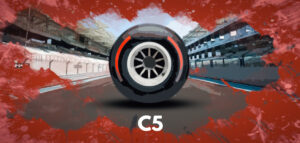 The C5, or Compound 5, is the improved version of yesteryear’s hypersoft compound – the fastest tyre compound by Pirelli. This tyre compound is suitable for tracks that require a high mechanical grip. One downside to this extra grip and performance is the considerably shorter life span of these tyres compared to the other compounds. Though the fastest tyre compound, it is not a qualifying tyre as the degradation is astronomical for starting races with it.
The C5, or Compound 5, is the improved version of yesteryear’s hypersoft compound – the fastest tyre compound by Pirelli. This tyre compound is suitable for tracks that require a high mechanical grip. One downside to this extra grip and performance is the considerably shorter life span of these tyres compared to the other compounds. Though the fastest tyre compound, it is not a qualifying tyre as the degradation is astronomical for starting races with it.
Intermediate Tyres
Since the start of the modern era of Formula One, the intermediate tyres have been constantly evolved to create a better balance for cars in wet and tricky conditions. In the last few years, the working range of these tyres have been expanded to guarantee a wider crossover range with both the slicks and the wets. This set of tyre is capable of evacuating 30 litres of water per tyre at a speed of 300 km/h. This makes the intermediate tyres a go-to option for teams on a drying surface or wet tracks with little standing water.
Wet Tyres
The wet tyre compounds are most effective during heavy rain. These tyres are made with a view to reduce aquaplaning, which provides better tyre grip rather than sliding off. Like the intermediate compound, this tyre set is capable of evacuating 85 litres of water per tyre when carrying a speed of 300 km/h. Another key feature is its diameter; the diameter of a wet tyre is 10mm wider than the normal slick tyres, which provides better grip to the drivers.
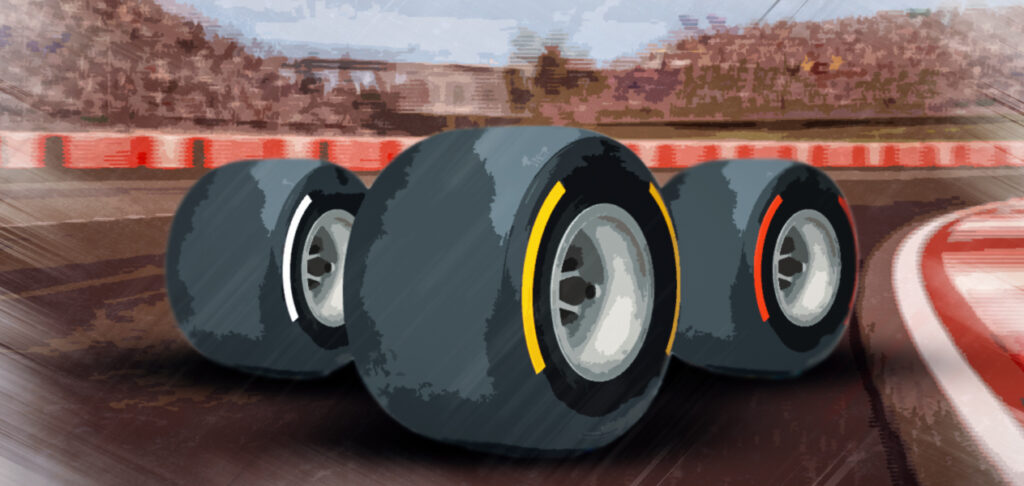
2021 Regulations
During a race weekend, each driver will be allocated 13 sets of tyres from Pirelli, of which three sets will be reserved for the race. So, a driver will have 10 sets of tyres that he could use during free practice sessions and qualifying. These tyres will be split up into 2 Hards, 3 Mediums, and 8 Softs for each weekend.
The teams will have to make at least one pitstop and use two different sets of tyres compounds. Only in case of wet weather conditions will the teams be able to get away with using only one compound of dry tyres.
Also Read – Friday’s free practice, Saturday’s frantic qualifying and the Sunday main event – explaining the 3-day extravaganza that is an F1 weekend (Part 1)
How does an F1 Pirelli tyre work?
Since Formula One tyres are complex, their drivability and grip are not like our day-to-day cars. The tyres in an F1 car need a minimum threshold of 80 degrees Celsius. This is done by teams using a special tyre blanket in the pitlane. But that temperature doesn’t imply that the tyre will have peak performance in that range.
During qualifying stints we often see drivers weaving around, accelerating and breaking rapidly to bring their tyres up to optimal temperature. This optimal temperature ranges between 100 to 110 degrees Celsius. If any one of the four tyres do not reach the optimal temperature, the driver can easily spot the difference due to the understeer or oversteer that is caused by this lack of temperature.
The drivers need to be careful when heating up the tyres, because when they get too hot their internal carcass temperature rises too, that can cause the car to slide around and degrade those set of tyres rapidly.
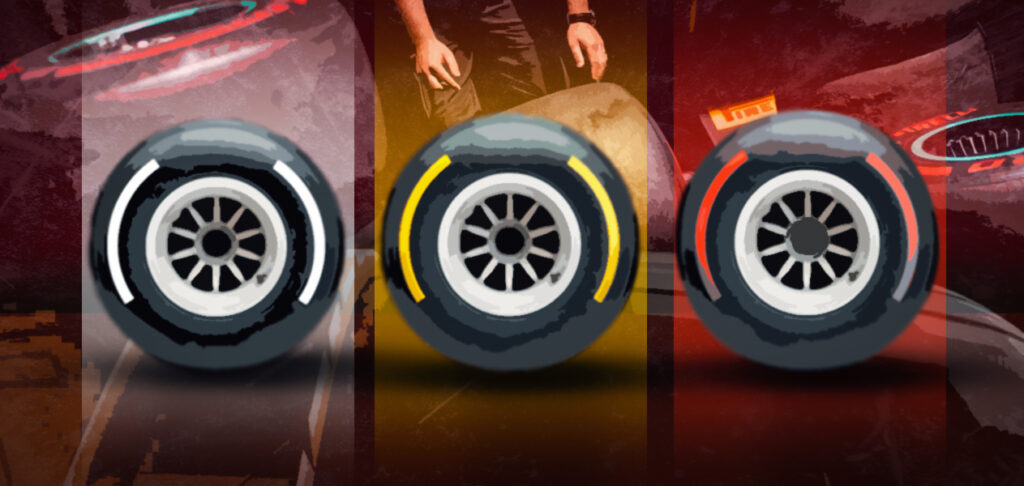
What causes Blistering in tyres?
Blistering happens when the internal tyre temperature and the middle portion of the tyre get too hot. This can happen when a driver is too aggressive on his tyres, or due to excessive track temperature, or even due to high ambient temperature. Pirelli has recently attempted to control blistering in its tyres by adding a certain chemical to the rubber.
What causes Graining in tyres?
Graining is the reverse process of blistering. When the internal temperature of the tyre has not reached its optimal temperature but the outer layer of the tyre is overheated, small pieces of rubber that are pushed off the edges of the tyres start sticking on the surface. This causes the lack of grip that most drivers complain about when they face graining.
But unlike blistering, graining can be repaired without changing into a brand-new set of tyres. Drivers can remove these small pieces of rubber by sliding or burning out their tyres.
Proper heating up of tyres can remove the possibility of blistering and graining, but how much time it requires to warm up a certain compound of tyre depends on the stiffness of the rubber used.
Written By
Rahul Saha

